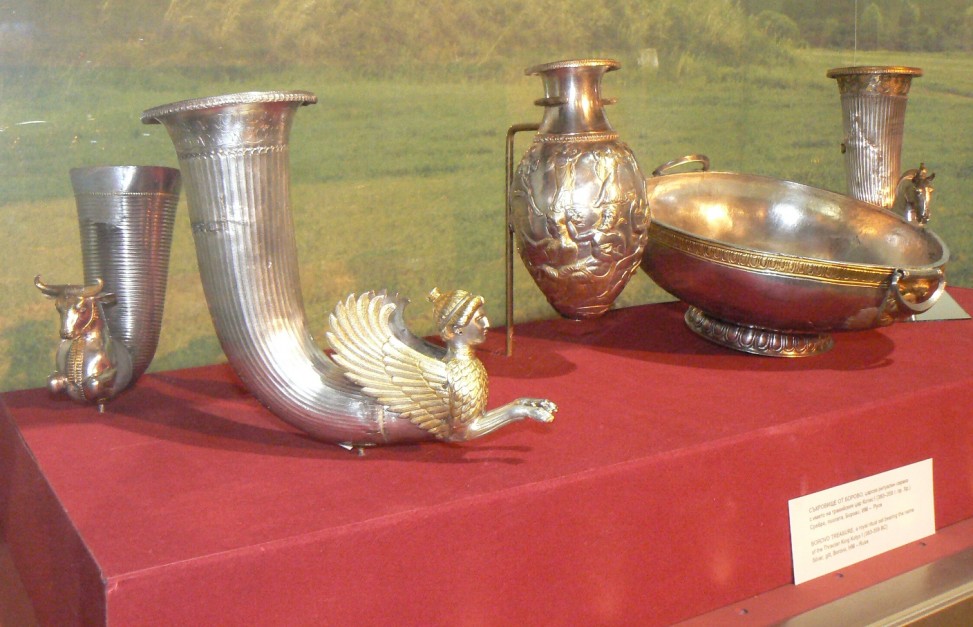The photo that we were given of this piece showed a sphinx-headed rhyta. After some research we have discovered that this piece is part of a table set of five silver-and-gilt utensils. The set is commonly referred to as the Borovo Treasure. Included in the set are three rhyta, a big bowl with two handles, and a rhyton jug. The rhyta are shaped at the base in half-figures. One is a bull, another is a horse, and the last is our beloved sphinx woman. She is covered in ivy leaves from the base of her neck to what would be the elbows of her lion paws. In this time period, Greeks believed that sphinxes were predominantly female. On our rhyta, there is an inscription that reads, “[Belongs to] Cotys from [the town of] Beos.” (This translation is in accordance to Bulgaria’s Thracian Heritage page.) It is from this inscription that historians have assumed the table set had been given to a local Getic ruler from Cotys I, the king of Thrace from 382-395 BCE. Thrace was an ancient territory that covered parts of modern day Turkey, and the extreme north of Greece. However, the cultural hub took up what is known today as Bulgaria. The set had been found in Borovo, Bulgaria, in late 1974 while a field was being ploughed. It has since been dated back to the first half of the fourth century BCE, during the Thracian civilization. Currently the full set resides in the history museum in Ruse, Bulgaria. Citations: http://www.omda.bg/public/engl/history/borovo_treasure.htm
